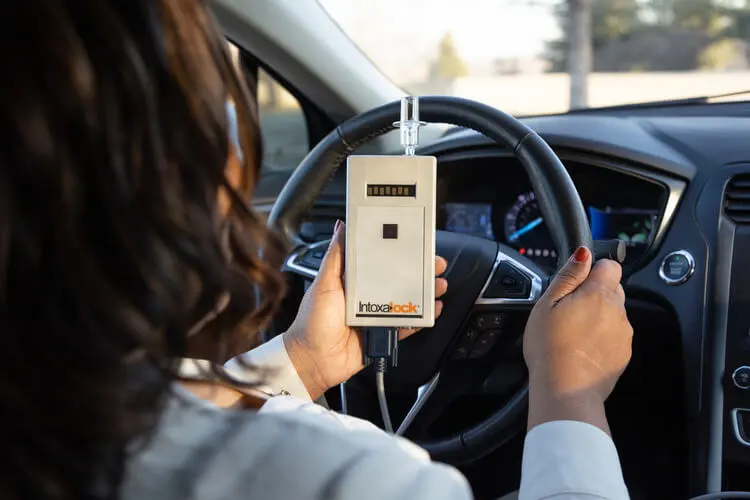Liv's Law: How Ohio HB 37 Reshapes IID Regulations for Drunk Drivers

New Ohio Drunk Driving Law (Liv’s Law) Increases Pre-Conviction IID Requirements and Financial Penalties
Drunk driving is a serious issue in Ohio, and it’s created a trail of devastating consequences for families and communities. Between 2019 and 2021, the Ohio State Highway Patrol reported nearly 40,000 crashes caused by impaired drivers resulted in over 24,350 injuries and tragically claimed 2,002 lives. In 2021 alone, the National Highway Traffic Safety Administration reported more than 11,300 Operating a Vehicle Impaired (OVI) arrests statewide.
These numbers highlight a persistent and dangerous problem lawmakers are addressing by introducing Ohio HB 37, a new and tougher drunk driving law.
This blog is for informational purposes and is not legal advice. Consult an experienced DUI attorney if you need additional support.
Ohio House Bill 37 Overview and Objectives
Ohio House Bill 37 (HB 37), also known as "Liv's Law," is a direct response to the heartbreak caused by drunk driving. Named in memory of Olivia Wright, who was killed by a drunk driver, this law introduces tougher penalties for OVI offenses and aims to prevent repeat violations. Effective April 9, 2025, HB 37 builds on previous efforts like Annie’s Law by increasing financial penalties, expanding ignition interlock device (IID) requirements, and introducing new tools like oral fluid (saliva) testing for drug-impaired drivers.
By focusing on accountability and safety, HB 37 hopes to save lives and reduce the number of alcohol- and drug-related crashes on Ohio’s roads. This blog breaks down the key changes under Liv’s Law and explains how these updates will impact drivers in the Buckeye State.
If you have immediate questions about Ohio’s ignition interlock device law, please reach out to an Intoxalock State Specialist at (888) 283-5899. We want to help new and existing customers navigate Liv’s Law as smoothly as possible.
HB 37 OVI Key Changes
HB 37 revises Ohio's OVI laws to increase accountability for drunk drivers and improve public safety. Here’s what residents convicted of OVI will face under Ohio HB 37:
- Stricter IID requirements
- Increased financial penalties
- Introduction of oral fluid testing
- Harsher vehicular homicide penalties
- Modified driving privileges
These components of Liv’s Law in Ohio will likely improve road safety while imposing more severe consequences on repeat and high-risk drunk drivers.

Ohio’s Ignition Interlock Device Law
If you’re convicted of OVI for the first time in Ohio, your previous criminal history will be carefully considered. Normally, there’s a 15-day “hard suspension,” which means you can’t drive at all for 15 days, no exceptions. However, if you don’t have any past convictions for losing physical control of a vehicle (a common plea for a first-time OVI), the court can waive this hard suspension. But if you do have such a conviction within the previous 10 years, the hard suspension increases to 45 days, and you must install an IID (car breathalyzer) to drive after that.
This law also expands the breathalyzer requirement for pre-conviction administrative license suspension (ALS) periods. A pre-conviction ALS period is the time when your driver's license is temporarily taken away after you are arrested for OVI but before your case is resolved in court. During this period, you are not legally allowed to drive unless specific conditions, like installing an ignition interlock device (IID), are met.
Under Ohio's HB 37, if you’ve had a previous DUI, or DUI plea, and fail or refuse another chemical test, you are required to use an interlock throughout your license suspension. This rule change is to prevent people who have pled down their first OVI from getting the same leniency if they are caught drunk driving again.
The interlock mandate applies only to alcohol related offenses. For drug impaired driving convictions, judges will decide if you are required to install an IID.
Second Offense IID Mandate in Ohio
Under HB 37, drivers who are convicted of OVI for the second time must have an ignition interlock device (IID) installed if they want to drive while their license is suspended. This is a change from an earlier law that let judges decide whether to require the device.
If you are caught driving drunk (OVI) for the second time, you will face stricter requirements under Ohio HB 37. If you want to get limited driving privileges while your license is suspended, you must install an ignition interlock device (IID) in your car. An IID is a small breathalyzer connected to a vehicle that requires you to pass a breath test showing no alcohol before the car starts. This new rule is a change from an earlier stance that let judges decide whether to require the device.
If you need help getting a car breathalyzer installed when Ohio HB 37 takes effect, reach out to Intoxalock for a free quote. We have nearly 150 installation locations in the Buckeye state.
Ohio HB 37 Increases Financial Penalties and License Reinstatement Fees
HB 37 raises minimum fines for OVI offenses by $190 across all categories:
| Offense | Minimum Fine |
|---|---|
| First offense | $565 minimum |
| Second offense | $715 minimum |
| Third offense | $1,040 minimum |
| Fourth or subsequent offense | $1,540 minimum |
While fines are increasing, it’s cheaper to get your license back. License reinstatement fees are down from $475 to $315, resulting in a net increase of $30 in total costs.
Studies, such as this one from the National Bureau of Economic Research, suggest that increasing fines are a deterrent to drunk driving, especially when paired with other measures like ignition interlock requirements, license suspension, and tougher enforcement such as in Ohio HB 37.
HB 37 OVI Law Changes: Oral Fluid Testing
Ohio House Bill 37 also gives police officers a new tool to catch you if you are driving under the influence of drugs. If an officer suspects you of driving while impaired by drugs, they can collect an oral fluid (saliva) sample from you. While these tests can’t tell how ‘high’ you are, they can detect if there are illegal drugs in your system and that can be used as evidence in court.
Ohio has rules called implied consent laws. This law means that by driving on the state’s roads, you automatically agree to take alcohol or drug tests if you’re suspected of driving impaired. If you refuse an oral fluid test, you’ll face the same consequences as if you refused a blood or breath test. This new testing method makes it easier for police to combat drug-impaired driving.
How Intoxalock Can Help You Navigate for HB 37 OVI Changes
Intoxalock is a state-approved provider of ignition interlock devices (IID) in Ohio with over 145 locations statewide. Our devices meet all compliance requirements under HB 37 and are equipped with advanced technology to ensure accuracy and reliability. By installing an IID from Intoxalock, you can:
- Regain limited driving privileges during your suspension period
- Easily meet mandatory IID requirements if you have multiple DUI convictions
- Find out if you’re eligible for financial assistance programs to help cover breathalyzer costs
Intoxalock provides exceptional customer service and guidance throughout the IID installation process, so you can remain compliant with Ohio's updated regulations. Schedule your IID installation with Intoxalock today to maintain compliance with Ohio’s new laws while regaining safe driving privileges.
Make Sure You’re Ready for HB 37 Changes with Intoxalock
House Bill 37 represents a critical step forward in combating impaired driving in Ohio. By implementing stricter penalties and expanding preventive measures like ignition interlock devices, lawmakers are creating safer roads for all residents of and visitors to the Buckeye state.
Intoxalock IIDs are affordable for Ohio residents. A device costs roughly $3.63 per day, and Intoxalock offers flexible payment options. Call our Ohio State Specialist today at (888) 283-5899 to make sure you’re ready for Ohio HB 37.
FAQs to Help Maintain Compliance with Ohio HB 37
What is Ohio's House Bill 37 (HB 37)?
HB 37, also known as Liv's Law, is an Ohio DUI law aimed at reducing impaired driving by introducing stricter penalties for OVI offenses and expanding the use of ignition interlock devices (IID) for convicted drivers.
When did HB 37 go into effect?
Liv’s Law in Ohio went into effect on April 9, 2025.
How does HB 37 change IID requirements in Ohio?
The bill mandates IID installation if you’re convicted of OVI for a second-time and need limited driving privileges during suspension periods. Liv’s Law also allows courts to impose IID requirements for first-time offenders under certain conditions.
What are the new penalties for OVI offenses under HB 37?
HB 37 increases minimum fines for OVI offenses by $190 across all categories and reduces license reinstatement fees from $475 to $315, resulting in a net penalty increase of $30 per conviction.
How do first-time and repeat OVI offenses differ under HB 37?
If you’re convicted of OVI for the first time, you may have your hard suspension waived if you meet specific criteria, while drivers with repeat offenses face mandatory IID installation and stricter penalties.
What are the financial penalties and fees associated with Ohio’s DUI law 2025?
Minimum fines range from $565 for first offenses to $1,540 for fourth or subsequent offenses.
Where can I find an Ignition Interlock Device (IID) provider in Ohio?
Intoxalock has over 145 locations across Ohio and offers state-approved ignition interlock breathalyzers that comply with HB 37 requirements.
How can you stay compliant with Ohio’s new IID laws?
You can stay compliant by installing an IID from a state-approved provider like Intoxalock, which offers reliable devices and support throughout the process.



